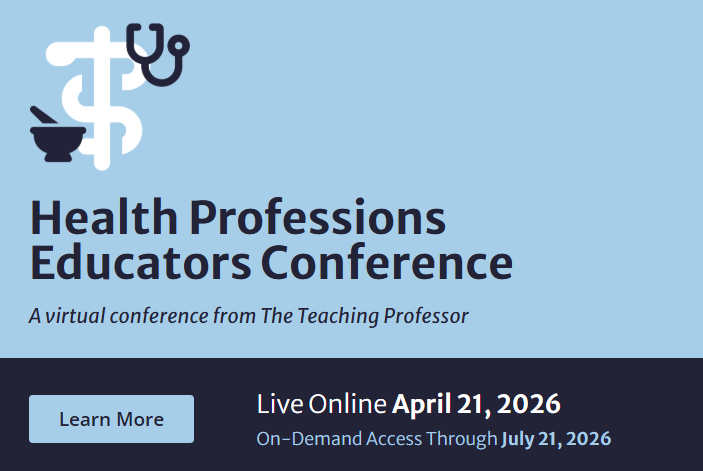Peer-to-peer conversations can help students to make connections with each other and course content. In a course that requires out-of-class reading, that conversation is highly reliant on students doing their part and completing the assigned reading. However, in recent semesters, students engaging in focused reading in which they annotate text is dwindling. There has been a noticeable decline in students’ engagement with course materials, evidenced by reduced annotations and superficial reading habits (Deale & Hyun, 2021; Mizrachi & Salaz, 2022). It seems as if a quick scan of one of the assigned pages is the best effort. Without adequate reading, students will be reluctant, or unable, to participate in class discussions and conversations for lack of understanding and fear of not ‘measuring-up’ to peers (Severe, E., Stalnaker, J., Hubbard, A., Hafen, C. H., & Bailey, E. G., 2024). Subsequently, instructor facilitated classroom conversations intended to enhance understanding of course content may stagnate and falter. Naturally, to maximize student engagement with course content, students must have a degree of self-awareness and desire to do the work assigned to meet the goal of understanding, and mastering, course content.
The frame of content engagement can look different based on course, instructor and level of student. In this case, engagement is on the ‘micro’ level as it offers ideas on what can happen before, during, and after class (Handelsman, M. M., Briggs, W. L., Sullivan, N., & Towler, 2005). While engagement can be observed in many forms, this piece focuses on transactional engagement in which students interact with each other and with the instructor (Zepke & Leach, 2010). As instructors, we can provide the tools to help students engage with content and meaningfully participate in conversation to develop a more robust understanding of coursework.
Course Context
I teach a required, writing-intensive course for students in their junior year of their undergraduate studies. In addition to a heavy writing component, there is also a heavy reading component. While students enjoy the subject matter, they are not terribly thrilled by the amount of reading they are expected to complete. Generally, students start the semester strong, by keeping up with reading, sharing key points and participating in organic content-based conversations. By week four, they hit a wall. There is a notable drop off in the reading and conversations. In an ongoing effort to support students, I altered the clarified expectations and gave more support to students, both in class and beyond.
Choices
Students are busy with layers of competing obligations including classes, work, university organizations and athletics that may impact their time to prepare for class. They may also feel underprepared for reading focused non-fiction, informational texts that require more attention than a casual fiction novel. Being mindful of some students’ sensitivity to what they perceive as inadequate skills, the strategies listed below were shared in class. The whole group presentation and in-class practice encouraged students to try all the tools and self-determine which was most helpful for the time and abilities.
Before Class
Students were introduced to three strategies to use to capture the key points of the assigned reading. The activities provide multiple entry points that allow students to utilize the tool right away.
- SQ3R. Although this is not a new strategy, I was surprised at how few students had experience working with it. Preparing to join classroom discussions requires intentional preparation. Some students may feel underprepared and think a simple scan of the assigned readings will enable them to join a conversation. While that may work on a superficial level, robust, and meaningful conversation requires proactive work. For students unsure of how to read for maximum understanding a review of the SQ3R strategy is helpful. After a class introduction to the strategy, all students are given a handout with the students so they can utilize as they see fit.
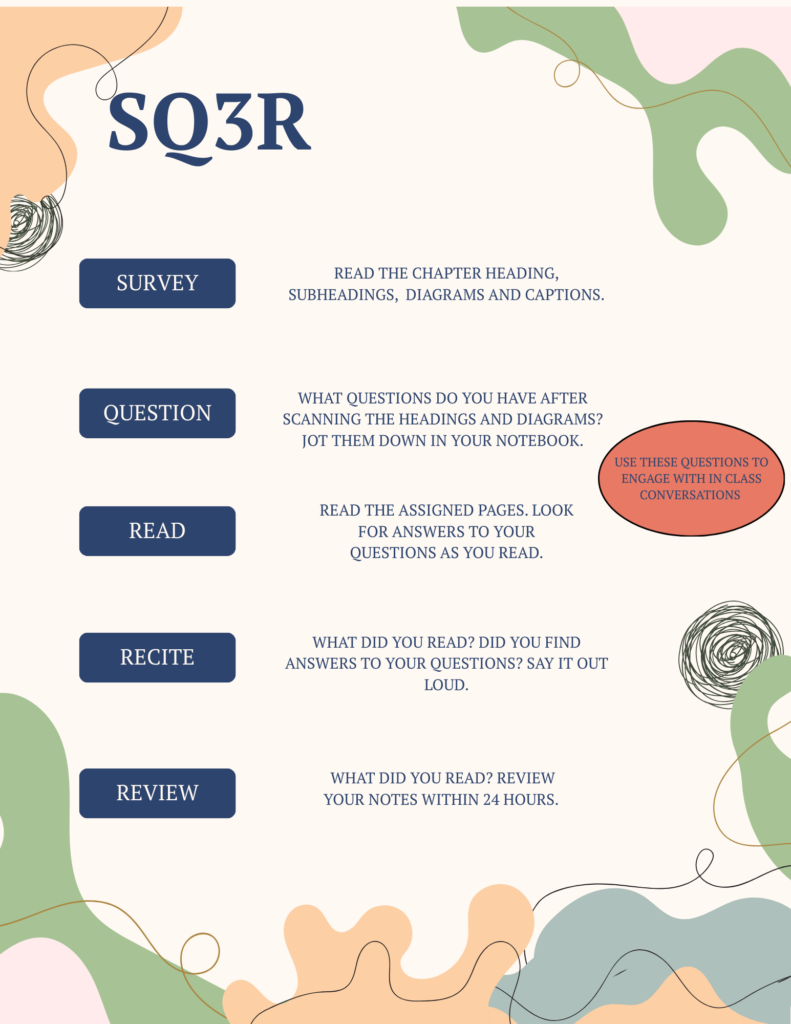
- Launchpad. For some students, the formulaic nature of a guided strategy, like the SQ3R, may be too limiting. For the student that wants to prepare for in-class conversation, preparing and providing a few open-ended reading reflection questions (launchpad ideas) may be useful. The questions are intentional few in nature so students can focus on responding to one or two and reading to find solid text evidence to support responses.
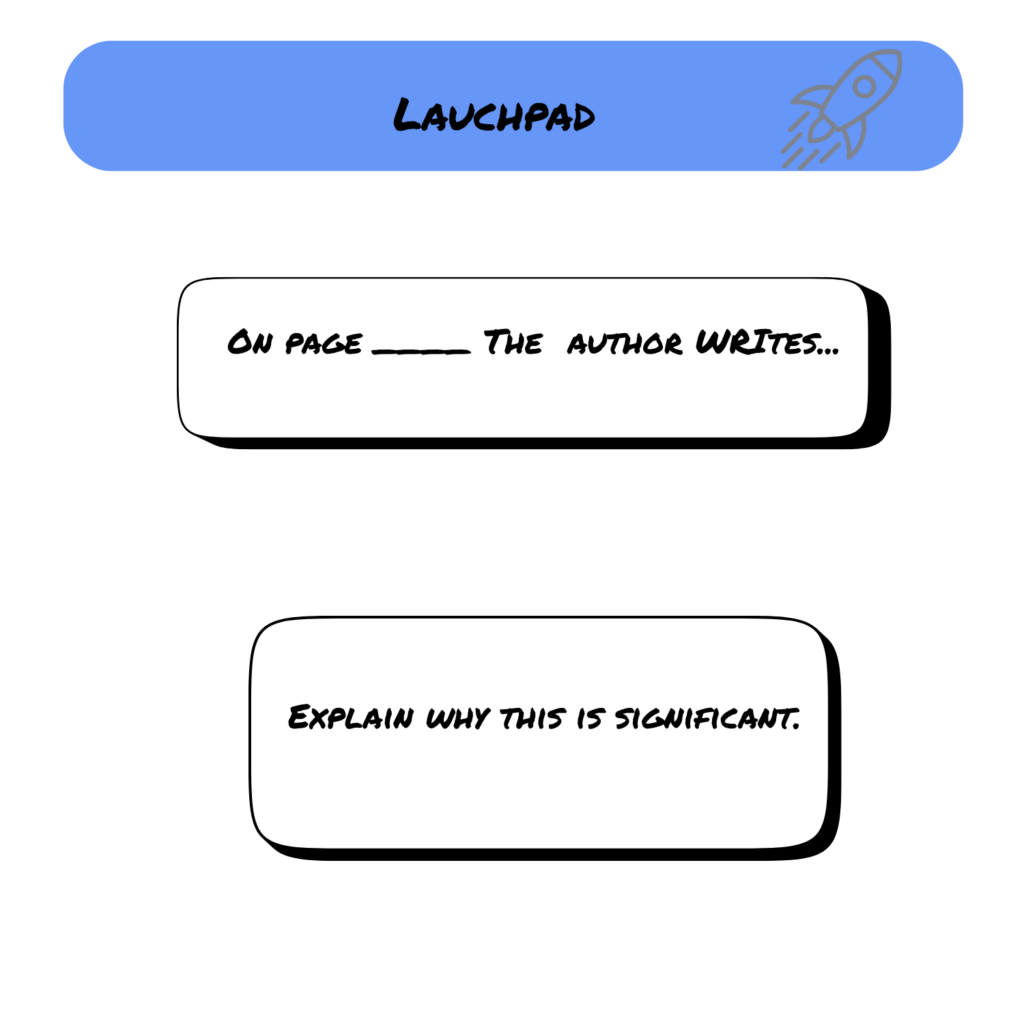
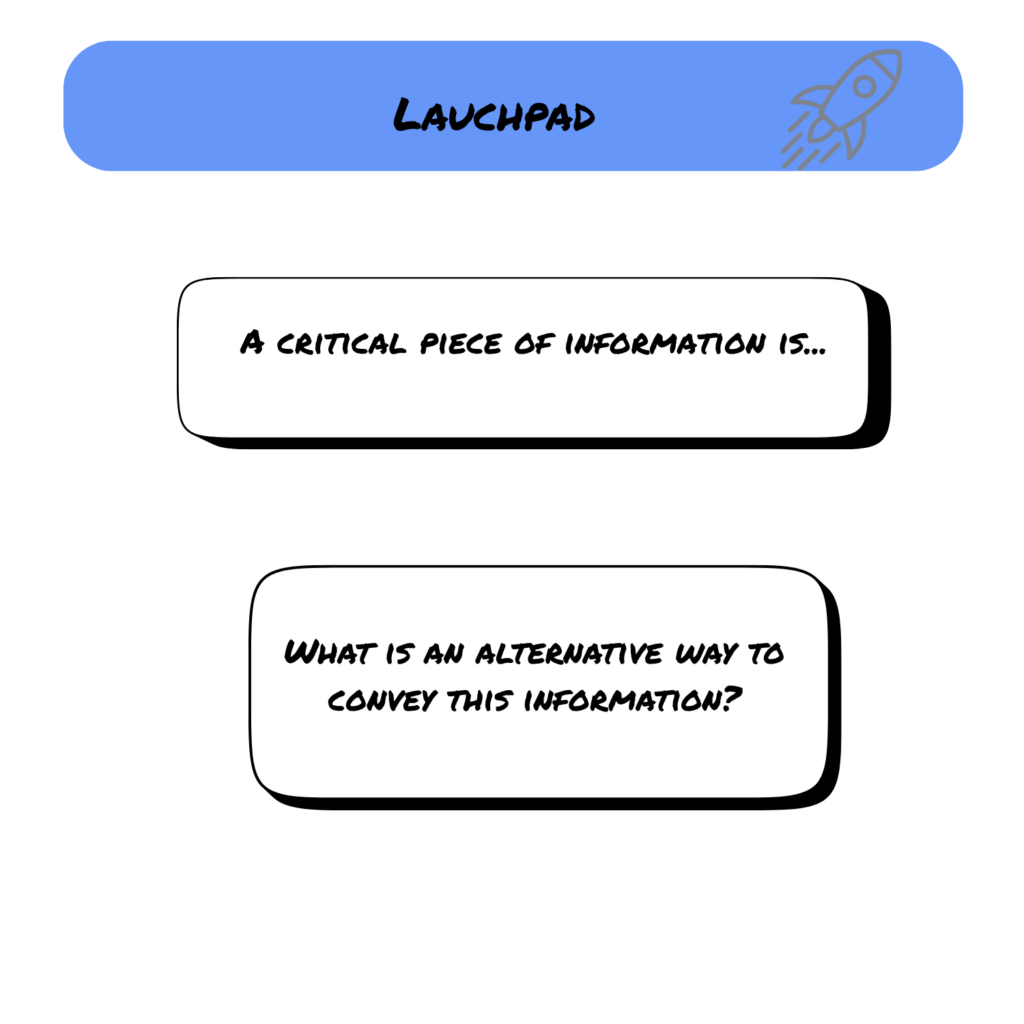
- Sketchnoting. For students that best express their understanding visually, sketchnoting is a wonderful tool (Parks, 2022). Sketchnoting involves using images, words, and colors to make thinking visible on paper (or a device). When introduced in class as a worthwhile way to capture understating, students may be more likely to try the method rather than just trying to remember what they read.
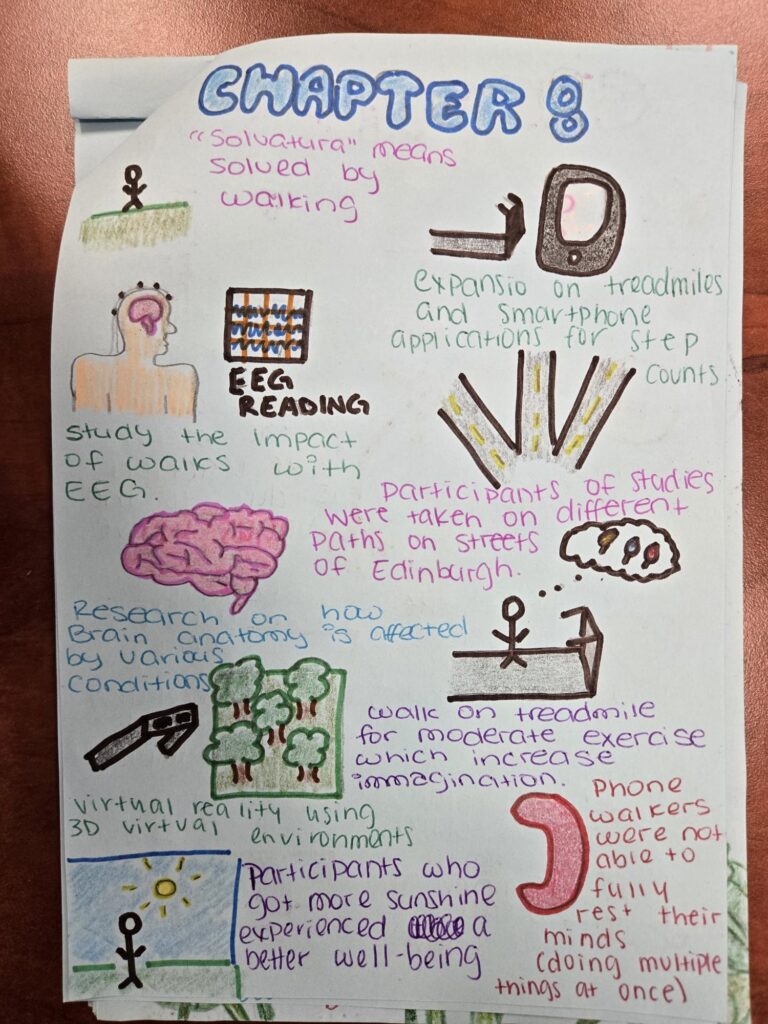
The First 10 Minutes of Class
Even with adequate preparation and readings, students get busy with other obligations between assigned coursework and class time. To help students feel prepared, the first 10 minutes (no more) of class is provided as a focused reflection.
- Focused Reflection. During the 10-minute reflection, students may review their SQ3R notes, add to their reading reflections or sketchnotes. Students may also reread (or, for some, read) the assigned pages. For students that have done it all, they are tasked with doodle time. It’s not as unstructured as it seems.
- Doodle Time. If a student is reluctant to participate in any of the focused reflections, they are given a doodle paper and three colored pencils. The expectation is to keep the pencils moving during the entire 10-minute period. Some students may start by drawing squiggles or lines, but they do transition into drawing sketches of things they’ve read. Once students believe there is no judgment on their artistic ability and that the focus time is really intended to help them think about the course content, they respond positively to the task. Some have even transitioned from doodling to sketchnoting because, as shared by one student, “it matches the way I think.”
By allowing this 10-minute period to capture thoughts, students have to ability to organize their thoughts and feel confident in their classroom conversation contributions. While it doesn’t level the field completely, and there are still students that do not read, those that do have shared they appreciate the time to refocus their attention on the coursework.
There are only two rules for focused reflection time. The rules are aimed at keeping the classroom distraction free.
- No talking (to me or each other). The quiet period allows think-time for all students.
- No devices. The device free period encourages students to independently think about the assigned readings without supporting- or competing- interests. Students are told candidly, I care about their input, not a generative AI summary of the reading.
Building a Safe Space for Conversations
Even with adequate preparation, sharing connections to coursework can be daunting. To support students in the process, a small to big approach is beneficial. First, students are assigned, by the instructor, into conversation corner groups. These groups are intentionally small to promote equitable opportunities to speak. With small classes, I create the groups and intentionally separate any groups of friends to provide opportunities for students to interact with others that may bring new perspectives to the conversation. For larger groups, a random group generator such as https://www.randomlists.com/team-generator can be used. After allowing small group conversation, the students are transitioned into whole group discussions in which they share understanding or respond to instructor posed questions as a group.
Getting the Conversation Going
Students may need help starting content-based conversations. Using a ‘fun’ tool engages students and allows all to have a chance to contribute.
- Spinning Questions. Pickerwheel (https://pickerwheel.com) or Spin the Wheel (https://spinthewheel.io/#google_vignette) are sites that allow the instructor to enter questions into a spinning wheel. Students spin the wheel and respond to questions in small groups. Students can also create a discussion wheel in their instructor assigned small groups using the questions they created for their SQ3R notes.
- Conversation Cards. The use of Conversation Cards can help students engage in focused conversation about course content. Students can either draw random card or review all cards and choose the one that is most appealing to them.
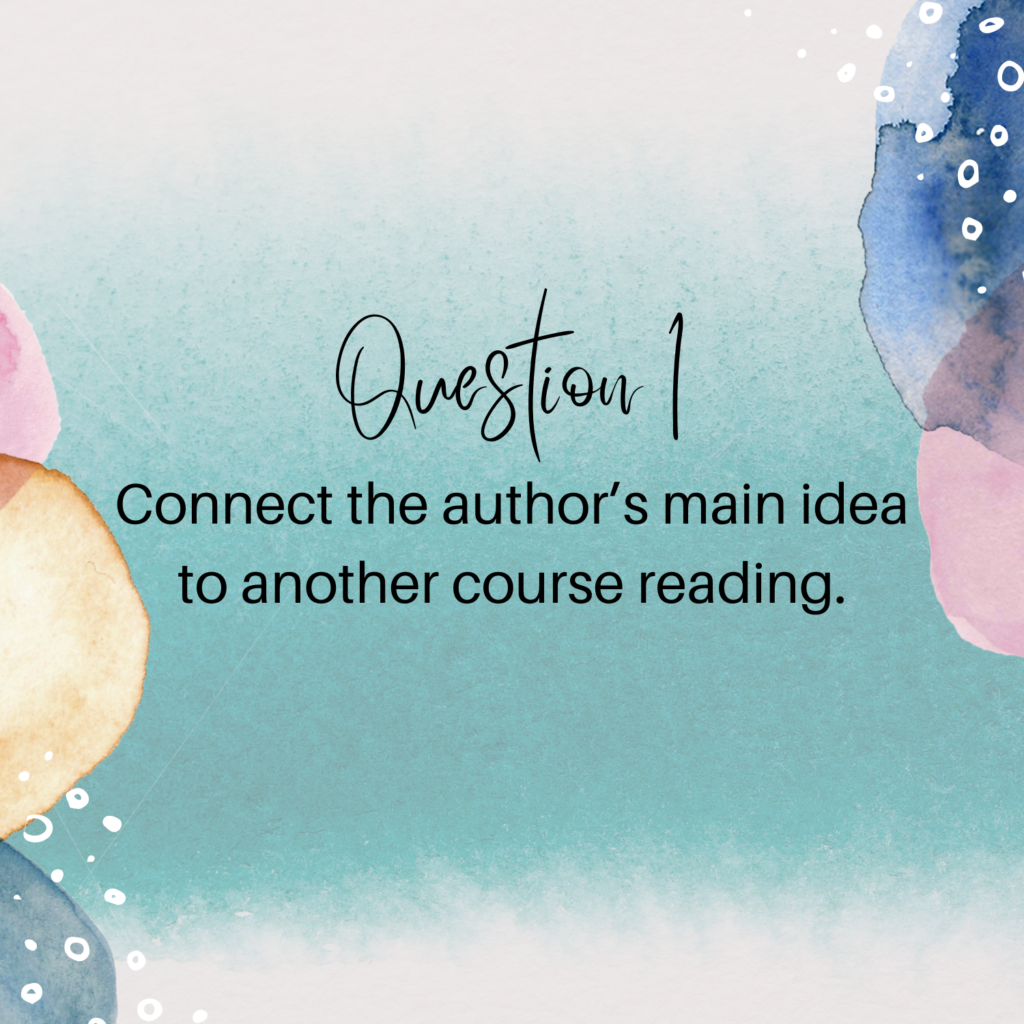
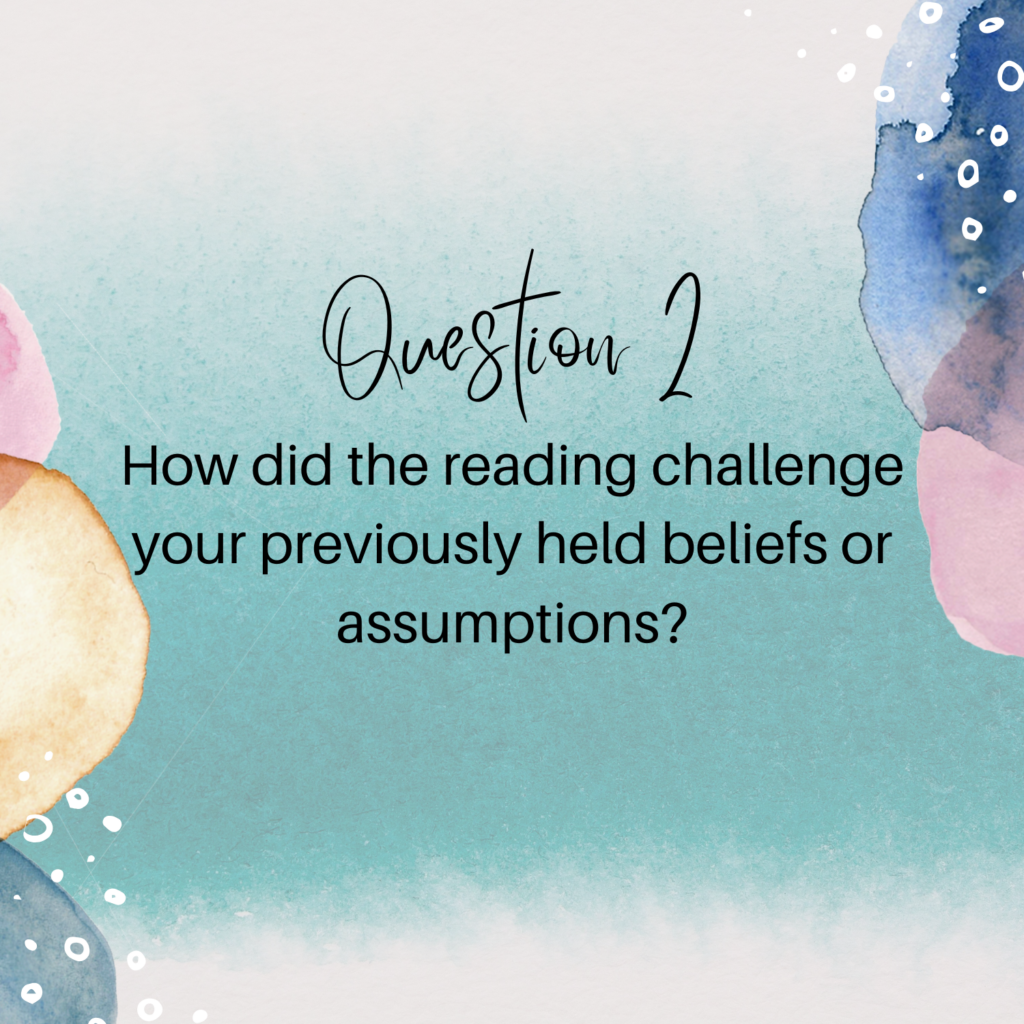
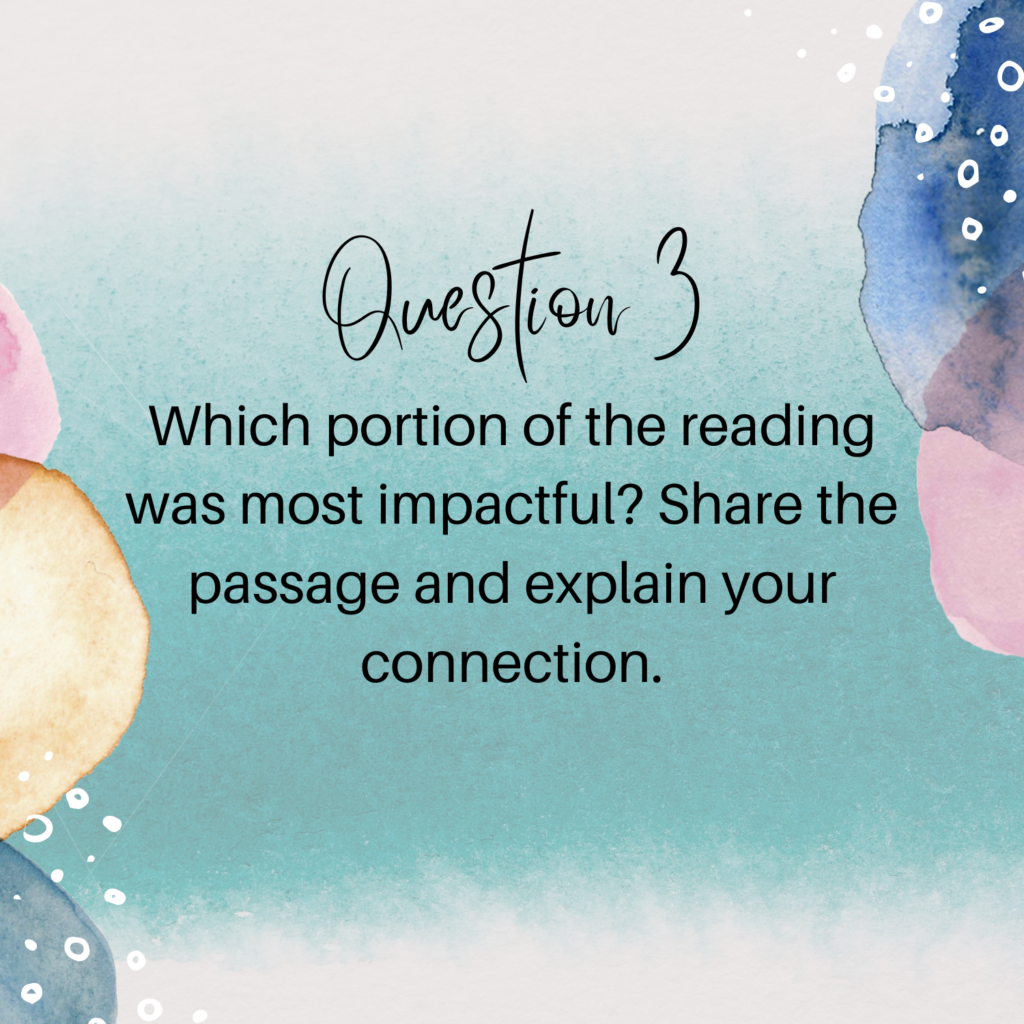

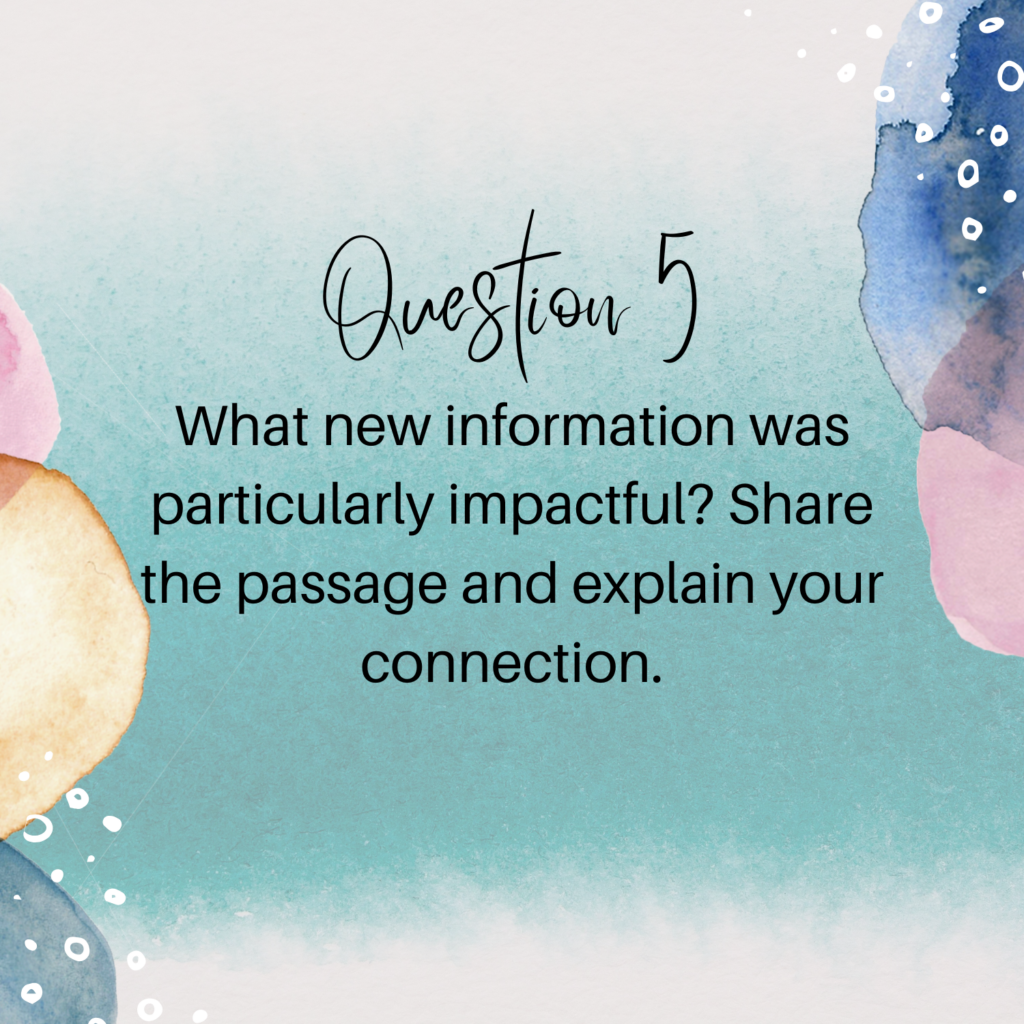
Ending Class
Ending class with an individual account of progress toward mastering course content helps students self-determine their next steps.
- Accountability Audits. As a ticket out the door, students can complete an exit slip capturing their efforts for the day. Instructors may use the exit tickets as participation grades or as formative assessments to determine how students are understanding content. With larger courses, the instructor may elect to review a random sample of the work, telling students the work is about personal reflection and accountability. Exit slips may be handwritten or they may be done electronically.
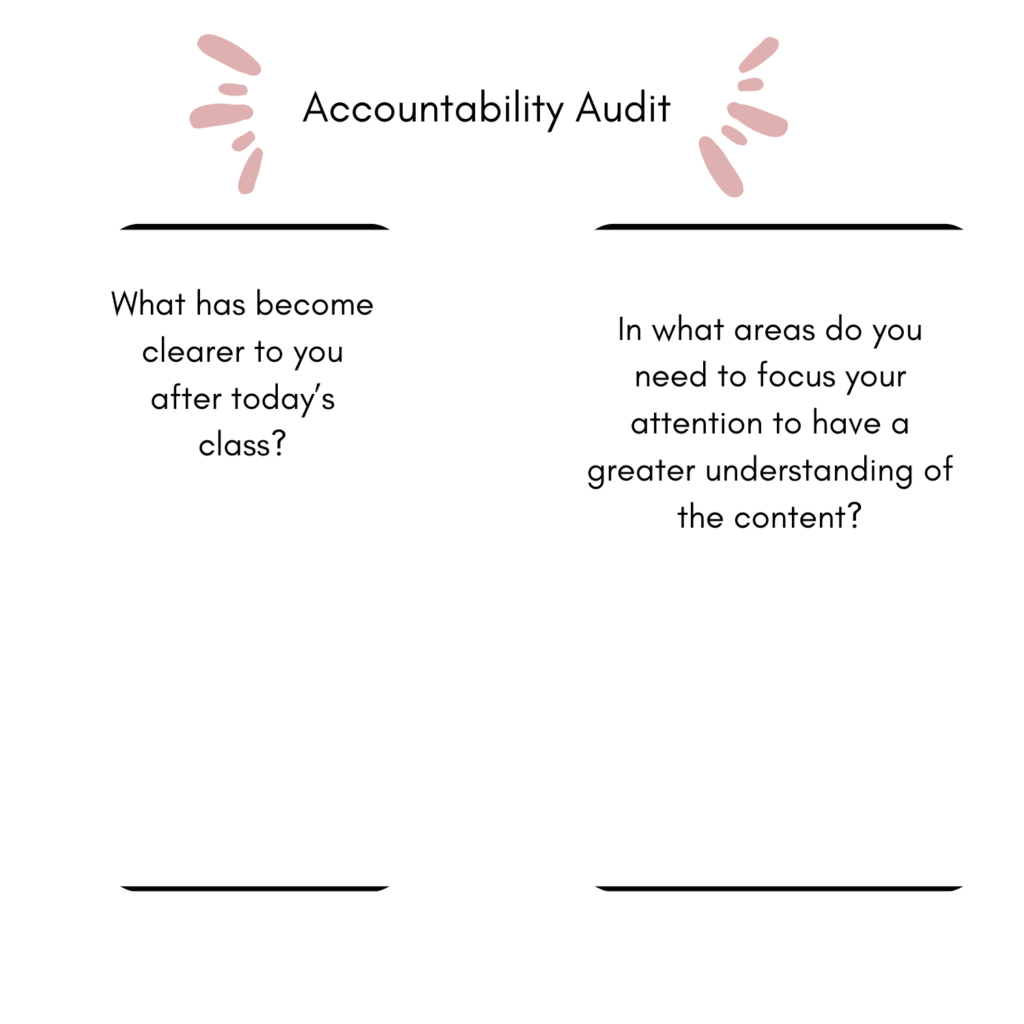
- One Last Word. Sometimes extra paper and written work just won’t work. An alternative is to ask individuals, or small groups of students, to suggest one word that sums up the main points of class. The main caveat is no word may be repeated. This one is fun, quick and pushes students to categorize their learning. Please consider a note of caution—this one can quickly turn into a small competition with individuals or groups trying to go first so “their” word is not shared by another group. Don’t worry—it’s all in good fun.
While engaging with content cannot be forced, finding tools that are interesting for students, focused enough for instructors to feel confident valuable class time is used productively and reinforces key points can make learning accessible to all.
Melissa Parks, PhD, is an associate professor of education at Stetson University in Deland, FL. Dr. Parks is an active member of the National Science Teaching Association (NSTA) and is currently a member of the NSTA Early Childhood- Elementary Science Teaching Committee. Her research interests include elementary pedagogies and environmental stewardship.
References
Deale, C. S., & Lee, S. H. (2021). To read or not to read? Exploring the reading habits of hospitality management students. Journal of Hospitality & Tourism Education, 34(1), 45–56. https://doi.org/10.1080/10963758.2020.1868317
Handelsman, M. M., Briggs, W. L., Sullivan, N., & Towler, A. (2005). A measure of college student course engagement. The Journal of Educational Research, 98(3), 184–192. https://doi.org/10.3200/JOER.98.3.184-192
Mizrachi, D., & Salaz, A. M. (2022). Reading format attitudes in the time of COVID. Journal of Academic Librarianship, 48(4), 102552. https://doi.org/10.1016/j.acalib.2022.102552
Parks, M. (2022). Drawing in college: Using sketchnoting to support student engagement. Faculty Focus. Magna Publications.
Severe, E., Stalnaker, J., Hubbard, A., Hafen, C. H., & Bailey, E. G. (2024). To participate or not to participate? A qualitative investigation of students’ complex motivations for verbal classroom participation. PloS one, 19(2), e0297771. https://doi.org/10.1371/journal.pone.0297771
Zepke, N., & Leach, L. (2010). Improving student engagement: Ten proposals for action. Active Learning in Higher Education, 11, 167-177. doi:10.1177/1469787410379680



